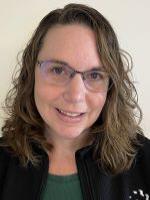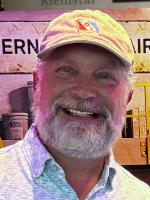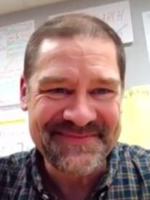Indigenous MakerPlaces: NASA Missions, Place-Based Learning and Makerspaces
,
Colorado Convention Center, Playground A
Presenters









Session description
Purpose & objective
-Participants will investigate, discuss and learn about 4 technologies currently being used by indigenous makerspaces to develop innovative hands-on projects that will better communicate unique indigenous perspectives pertaining to content provided by NASA’s Parker Solar Probe, Dragonfly and EZIE missions: Coding and Electronics (Scratch, LEGO Spike Prime, BlocksCAD, MagPi), 3D Fabrication (3D printers, BlocksCAD, Gravity Sketch), Virtual Reality (VR, Oculus Quest 2), Media Arts.
-Participants will have the opportunity to interact with and provide input into the use of the technologies listed above that will be collected and shared with the NASA outreach community.
-Participants will have the opportunity to sign up for information about the MakerPlace programs and how to integrate character education into their own makerspaces.
-Participants will have access to a series of lesson plans and demonstration resources.
Outline
Process:
Our approach will provide meaningful and interactive 5-10 minute experiences for playground station participants. Short demos and discussions will provide hands-on experiences for each of the projects being developed in the MakerPlace program. This approach will allow for a larger number of participants to experience the MakerPlace program through the pedagogy of play.
Content and Activities/Time:
-5 minute demonstrations will encourage audience participation and ‘peer to peer’ interaction with indigenous makers. Demonstrations for each of the 4 technologies below will showcase current Indigenous MakerPlace projects and content:
-Featured Technology -Coding and Electronics (Scratch, LEGO Spike Prime, BlocksCAD, Magnetometer Maker Kit)
-Project Demonstration: NASA's EZIE Mission's Citizen Science Magnetometer Maker Kit
-Project Demonstration: Connecting WiFi Lighting into Space Weather Date
-Featured Technology- 3D Fabrication (3D printers, BlocksCAD, Gravity Sketch)
-Project Demonstration: Navajo Educational Toys and Demos
-Featured Technology - Virtual Reality and Augmented Reality (VR, Oculus Quest 2)
-Project Demonstration: Parker Solar Probe AR and paper model Experience - 3D Art and Science
-Featured Technology - Media Arts
-Project Demonstration: Science Exploration through Tilt Brush5 Minute Peer to Peer
5 Minute Discussions
- Indigenous student presenters will answer questions and share their knowledge with participants. In addition, students from one or more indigenous community MakerPlaces will remotely Zoom in to answer questions and interact with participants. If connectivity is an issue, we will have pre recorded demos available at our session and/or via our digital tote.
Supporting research
MakerPlace Presentations:
Miller, J. & Tomas, T. (2021). Designing culturally responsive makerspace pop-up activities for middle school students at NSTA (National Science Teacher Association) Engage Conference, Online.
Miller, J. & Tomas, T. (2021). Designing culturally responsive makerspace pop-up activities for elementary students at (National Science Teacher Association) NSTA Engage Conference, Online.
Miller, J., Tomas, T., Maryboy, N., & Begay, D. (2018). A Rural Navajo Reservation Makerspace. Dimensions, (September/October), 50–52.
Space Weather Content Links in Support of Key MakerSpace demonstrations:
EZIE Mission: https://civspace.jhuapl.edu/destinations/missions/ezie
Parker Solar Probe Mission: http://parkersolarprobe.jhuapl.edu /
SDO | Solar Dynamics Observatory: https://sdo.gsfc.nasa.gov/
NOAA: https://www.swpc.noaa.gov/communities/space-weather-enthusiasts
MMS: https://www.nasa.gov/mission_pages/mms/index.html
Highlights From SDO's 10 Years of Solar Observation: https://www.youtube.com/watch?v=mvPH_gDMarw
Feeling_Hot_Hot_Hot_Parker_Solar_Probe_with_Merge_Cube: https://docs.google.com/presentation/d/1S-IsxRjBelxgFgwQ8QsVaQrDlu2KSZK8/edit#slide=id.p1
Additional supporting lesson plans and outreach activities will be included in the digital tote.
Session specifications
Laptop: Chromebook, Mac, PC
Tablet: Android, iOS, Windows
Knowledge Constructor
- Students build knowledge by actively exploring real-world issues and problems, developing ideas and theories and pursuing answers and solutions.
- Students use digital tools to connect with learners from a variety of backgrounds and cultures, engaging with them in ways that broaden mutual understanding and learning.
- Students explore local and global issues and use collaborative technologies to work with others to investigate solutions.
 Return
Return Explore and create: Playground
Explore and create: Playground  Trips and Tours
Trips and Tours